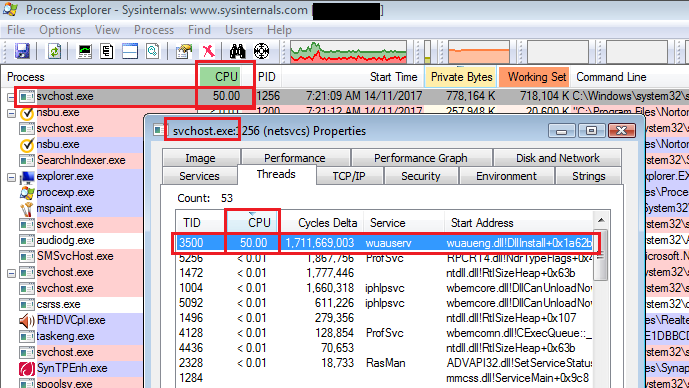Joadix100
Well-Known Member
I reinstalled Windows Twice and office too since i switched to an SSD, and after installing SP2 for microsoft office 2010 the cpu goes to 100% usage and windows update is stuck at searching for updates, system restore works and solves the problem but i would like to have the SP2 installed.
it happens like this, the update is installed and seconds after the CPU goes to 100% and stays there forever, after 2 hours it is still at 100% and it does not go down to 99% or less never, after restarting the machine it works normally for a minute or so and then it goes to 100% CPU usage, i noticed this only happens if both IE9 and MS Office SP2 are installed at the same time, if i have the SP2 installed but IE8 for example, the problem does not happen.
I tried installing the SP2 manually using the executable provided by microsoft in their website but i got the same results, i am actually running Vista SP2 with Server 2008 Updates but WITHOUT the Extended Kernel (by now).
Restarting the WUAUSERV Service only restarts the process and after 1 minute of it restarting, Svchost.exe takes off.
I need both Office 2010 and IE9 so uninstalling one of them is not an option, i can use office without the SP2 but as i said, i would rather not to without it.
Forgive my grammar, i´m a spanish speaker.
it happens like this, the update is installed and seconds after the CPU goes to 100% and stays there forever, after 2 hours it is still at 100% and it does not go down to 99% or less never, after restarting the machine it works normally for a minute or so and then it goes to 100% CPU usage, i noticed this only happens if both IE9 and MS Office SP2 are installed at the same time, if i have the SP2 installed but IE8 for example, the problem does not happen.
I tried installing the SP2 manually using the executable provided by microsoft in their website but i got the same results, i am actually running Vista SP2 with Server 2008 Updates but WITHOUT the Extended Kernel (by now).
Restarting the WUAUSERV Service only restarts the process and after 1 minute of it restarting, Svchost.exe takes off.
I need both Office 2010 and IE9 so uninstalling one of them is not an option, i can use office without the SP2 but as i said, i would rather not to without it.
Forgive my grammar, i´m a spanish speaker.
My Computers
System One System Two
-
- Operating System
- Windows Vista Ultimate SP2/Linux Mint 21.3
- Manufacturer/Model
- Acer Aspire 5315
- CPU
- Intel Core 2 Duo T7700
- Motherboard
- Acer Arcadia
- Memory
- 3GB DDR2 SODIMM 667MHz (1+2GB)
- Graphics card(s)
- Intel 965 Express Chipset Family
- Sound Card
- Realtek ALC268
- Monitor(s) Displays
- AU Optrionics B154EW02 V7
- Screen Resolution
- 1280x800
- Hard Drives
- Acer RE100 1TB SSD
- PSU
- Acer ADP-90SB BB (90W)
- Cooling
- Integrated
- Mouse
- Trust Primo Black
- Keyboard
- Qwerty ES
- Internet Speed
- 802.11n 5G
- Other Info
- https://valid.x86.fr/k2ssat
-
- Operating System
- Windows 11 Home Single Language
- Manufacturer/Model
- Myself
- CPU
- Intel Core i7-11700
- Motherboard
- MSI MPG z590 Gaming Plus
- Memory
- Kingston Fury 64GB DDR4 3200MHz (4x16GB)
- Sound Card
- Integrated
- Monitor(s) Displays
- Acer VG270P
- Screen Resolution
- 1920x1080
- Hard Drives
- Gigabyte AG450E500G NVMe Crucial BX500 SSD SATA3 1TB Toshiba HDWD110 SATA 1TBx2
- PSU
- Perseo ATX850W-P
- Case
- Antec DarkFleet DF-85
- Cooling
- Corsair H115i
- Mouse
- Redragon Griffin M607
- Keyboard
- Redragon Mitra K551RGB-1-SP
- Internet Speed
- 1Gbps
- Other Info
- https://latam.msi.com/Motherboard/MPG-Z590-GAMING-PLUS/Specification

